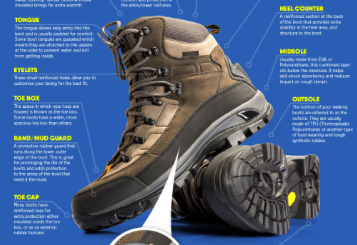When it comes to outdoor activities like hiking and running, having the right footwear is essential for a comfortable and safe experience. While both hiking shoes and running shoes are designed for physical activities, they serve different purposes and have distinct features. Let’s explore the key differences between hiking shoes and running shoes to help you choose the right footwear for your next adventure.
Hiking Shoes
Hiking shoes are specifically designed for walking on various types of terrain during outdoor adventures. They provide stability, support, and protection for your feet while navigating through different landscapes. Here are some of the key features of hiking shoes:
- Durable and sturdy construction to withstand rugged terrain.
- Thicker soles with deep treads for traction on uneven surfaces.
- Protective toe caps to shield your toes from rocks and debris.
- Waterproof or water-resistant materials to keep your feet dry in wet conditions.
Overall, hiking shoes are built to offer ankle support, protection, and stability, making them ideal for hiking, trekking, and backpacking adventures in the great outdoors.
:max_bytes(150000):strip_icc()/VWFit-hiking-shoes-versus-walking-shoes-7548411-152aaaad90024603b172fdf65bb0c157.jpg)
Credit: www.verywellfit.com
Running Shoes
Running shoes, on the other hand, are designed for activities that involve repetitive forward motion at a faster pace. They are lightweight, flexible, and cushioned to enhance your running performance and reduce the impact on your joints. Here are some key features of running shoes:
- Lightweight construction for agility and speed.
- Shock-absorbing midsoles to cushion your feet and reduce impact.
- Breathable materials to keep your feet cool and comfortable during runs.
- Less rigid soles to promote a natural foot movement while running.
Running shoes prioritize flexibility, cushioning, and breathability to support your feet during high-impact activities like jogging, sprinting, and marathons.
Main Differences
Now that we have explored the key features of hiking shoes and running shoes, let’s summarize the main differences between the two types of footwear:
| Hiking Shoes | Running Shoes |
|---|---|
| Ankle support and stability | Lightweight and flexible |
| Thicker soles with deep treads | Shock-absorbing midsoles |
| Protective toe caps | Breathable materials |
| Waterproof or water-resistant | Less rigid soles |
Credit: www.quora.com
Choosing the Right Footwear
When selecting between hiking shoes and running shoes, consider the type of activity you will be engaging in, the terrain you will be traversing, and your specific foot needs. Here are some tips to help you choose the right footwear:
- If you are hiking on rugged trails with uneven terrain, opt for hiking shoes for better stability and protection.
- For running on paved roads or tracks, running shoes with cushioned midsoles are ideal for shock absorption.
- Consider the weather conditions – waterproof hiking shoes are suitable for wet environments, while breathable running shoes are great for hot climates.
- Ensure a proper fit – both hiking and running shoes should provide ample toe room and secure heel support to prevent blisters and injuries.
Frequently Asked Questions
What Are Hiking Shoes?
Hiking shoes are footwear specifically designed for outdoor activities on rough terrains, trails, and hills.
What Are Running Shoes?
Running shoes are specialized footwear designed to provide comfort and support during running or jogging activities.
Can I Use Hiking Shoes For Running?
Hiking shoes may not be suitable for running as they have a heavier build and are designed for rough terrains, not running tracks.
What Are The Differences Between Hiking Shoes And Running Shoes?
Hiking shoes have thicker soles, rugged tread patterns, and provide better ankle support, while running shoes have lighter soles, cushioning, and flexibility.
Conclusion
In conclusion, the main difference between hiking shoes and running shoes lies in their design and functionality. Hiking shoes prioritize stability, support, and protection for outdoor adventures on rugged terrain, while running shoes focus on agility, cushioning, and breathability for high-impact activities like jogging and sprinting. By understanding these differences and considering your specific needs, you can choose the right footwear that will enhance your outdoor experience and keep your feet comfortable and safe.




